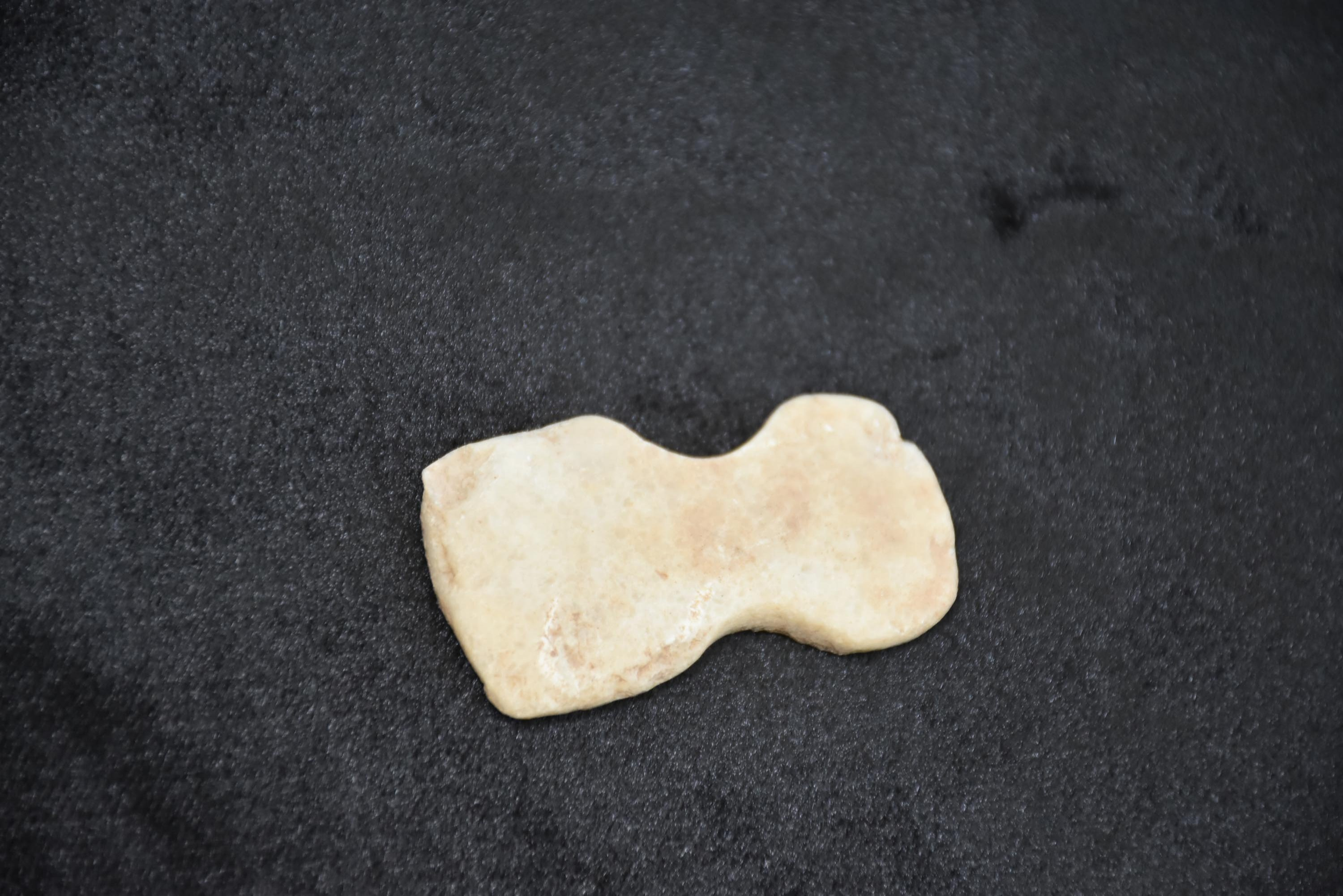An idol dating back 5,000 years has been unearthed in Turkey.
Believed to represent a plump goddess, the artifact was found in Yeşilova mound, the oldest human settlement area in the western province of Izmir where nearly 200 findings are unearthed every year.
Zafer Derin from the Archaeology Department at Ege University's Faculty of Letters, who is also the head of the excavation at Yeşikova mound, explained that the idol measures 7 centimeters (2.75 inches) and is cubical in structure, with a circular head and rectangular body.
A view of the idol found in Yeşilova Mound, Izmir, western Türkiye, Aug. 17, 2022. (DHA)
Noting that small-sized god or goddess statuettes are described as "idols" in polytheistic religions, Derin continued: "The idol can be interpreted as a two-dimensional worship object. Previously plumpy goddesses were depicted with an authoritarian appearance, holding animals next to them. With the change and abstraction of these goddesses' depictions, they started to be presented like the idol that we have recently unearthed. These types of idols are seen as of the Neolithic period."
Highlighting that the marble idol was used to bring fertility and health to the person carrying it, Derin said that the artifact would be sent to the Izmir Archaeology Museum.








